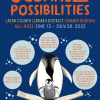WASHINGTON — FEMA’s U.S. Fire Administration released the “Wildland Urban Interface: A Look at Issues and Resolutions,” report earlier this week.
The report is meant to raise awareness and initiate collaborative efforts to facilitate change in wake of catastrophic wildfire losses in the wildland urban interface. This report highlights the wildland interface issues in the United States and will help the wildland and structural firefighting community and neighborhoods unite around key actions to reduce risk to themselves, to firefighters and the environment.
“Wildfires are no longer seasonal events — fueled by climate change, they are destroying lives and property year-round,” said FEMA Administrator Deanne Criswell. “Our communities have battled the nation’s most damaging wildfires in just the last few years, with wildfires accounting for 62% of the structures lost over the last 15 years. It is clear that we simply cannot shy away from the work required to mitigate future risk,” she said. “In addition to the mitigation grants that FEMA provides to state and local communities to bolster their climate resilience to wildfires, this Wildland Urban Interface report lays out a unified, strategic approach to risk reduction at the national, state, regional and local levels to achieve that critical objective.”
Wildfires are among the worst natural and man-made disasters facing our nation. Factors such as climate change and reduced land management practices are significantly contributing to the cause, increasing the frequency and intensity of wildfires.
“While the resolutions to the challenges identified may seem daunting, they are achievable,” said U.S. Fire Administration Administrator Dr. Lori Moore-Merrell. “Together, we can take action to change the trajectory of the ever-increasing wildfire threat in America and create resilient landscapes for generations to come.”
Federal agencies are working with partners to address many of the wildland interface challenges discussed in this report. These efforts include:
- Increasing forest and rangeland resiliency through prescribed burning and mechanical thinning.
- Strengthening communication strategies and engagement operations through wildfire prevention and mitigation programs.
- Proactively planning for and mitigating the continued effects of climate change.
Other high-priority areas in the report are also focused on firefighter health and safety, especially mental and behavioral health, and public safety through improving evacuation procedures with efforts such as Reverse 911.
To help prepare yourself and your family for wildfires, visit Ready.gov/wildfires.

